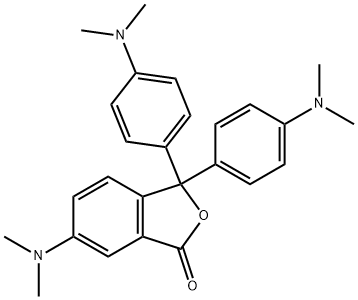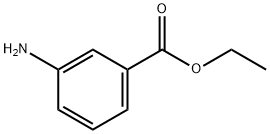Crystal violet lactone
- CAS NO.:1552-42-7
- Empirical Formula: C26H29N3O2
- Molecular Weight: 415.53
- MDL number: MFCD00070611
- EINECS: 216-293-5
- SAFETY DATA SHEET (SDS)
- Update Date: 2025-07-24 18:13:44

What is Crystal violet lactone?
Chemical properties
Light yellow solid
The Uses of Crystal violet lactone
Crystal Violet lactone is an important functional dye for the production of pressure sensitive materials. It is a chemical intermediate , intermediates for thermal/carbonless Paper, used in medicine and biochemical research, a leuco dye..
What are the applications of Application
Crystal Violet lactone is a useful leuco dye
Definition
ChEBI: Crystal violet lactone is a member of benzofurans.
General Description
Blue-green crystals or pale green powder.
Air & Water Reactions
Insoluble in water.
Reactivity Profile
Crystal violet lactone may be sensitive to excessive light and heat.
Health Hazard
SYMPTOMS: Symptoms of exposure to Crystal violet lactone may include irritation.
Fire Hazard
Flash point data for Crystal violet lactone are not available; however, Crystal violet lactone is probably combustible.
Flammability and Explosibility
Non flammable
Properties of Crystal violet lactone
| Melting point: | 180-183°C |
| Boiling point: | 534.12°C (rough estimate) |
| Density | 1.1424 (rough estimate) |
| vapor pressure | 0Pa at 25℃ |
| refractive index | 1.7120 (estimate) |
| storage temp. | Sealed in dry,Room Temperature |
| form | Powder |
| pka | 4.73±0.24(Predicted) |
| color | White to Light yellow |
| Water Solubility | <0.1 g/100 mL at 22.5 ºC |
| CAS DataBase Reference | 1552-42-7(CAS DataBase Reference) |
| EPA Substance Registry System | Crystal violet lactone (1552-42-7) |
Safety information for Crystal violet lactone
| Signal word | Warning |
| Pictogram(s) |
 Exclamation Mark Irritant GHS07 |
| GHS Hazard Statements |
H315:Skin corrosion/irritation H319:Serious eye damage/eye irritation H335:Specific target organ toxicity, single exposure;Respiratory tract irritation |
| Precautionary Statement Codes |
P261:Avoid breathing dust/fume/gas/mist/vapours/spray. P264:Wash hands thoroughly after handling. P264:Wash skin thouroughly after handling. P271:Use only outdoors or in a well-ventilated area. P280:Wear protective gloves/protective clothing/eye protection/face protection. P302+P352:IF ON SKIN: wash with plenty of soap and water. P305+P351+P338:IF IN EYES: Rinse cautiously with water for several minutes. Remove contact lenses, if present and easy to do. Continuerinsing. |
Computed Descriptors for Crystal violet lactone
Crystal violet lactone manufacturer
New Products
Indole Methyl Resin tert-butyl 9-methoxy-3-azaspiro[5.5]undecane-3-carboxylate Boc-His(Boc)-OH 2-CTC Resin 4-Chloro-7-tosy1-7Hpyrrolo[2,3-d]pyrimidine 5,7-Dibromo-1H-indole 2,5-dichloro-N-hydroxy-4,6-dimethylpyridine-3-carboximidamide 2,2-Dimethoxy-7-azaspiro[3.5]nonane hydrochloride 4-chloromethyl-5-methyl-1,3-dioxol-2-one (DMDO-Cl) R-2-BENZYLOXY PROPIONIC ACID 1,1’-CARBONYLDIIMIDAZOLE 1,1’-CARBONYLDI (1,2-4 TRIAZOLE) N-METHYL INDAZOLE-3-CARBOXYLIC ACID 4-((2-hydroxyethyl)thio)benzoic acid 1-(TERT-BUTOXYCARBONYL)-2-PYRROLIDINONE Methyl 6-methylnicotinate 3-Pyridineacrylic acid tert-Butyl carbazate TETRAHYDRO-2H-PYRAN-3-OL 2-((4-morpholinophenylamino) (methylthio) methylene) malononitrile 3-(4-morpholinophenylamino)-5-amino-1H-pyrazole-4-carbonitrile 2,4-dihydroxybenzaldehyde 1,3-Diethyl-1,3-Diphenylurea Methyl 2-methylquinoline-6-carboxylateRelated products of tetrahydrofuran








You may like
-
 Crystal Violet lactone CAS 1552-42-7View Details
Crystal Violet lactone CAS 1552-42-7View Details
1552-42-7 -
 Crystal Violet lactone CAS 1552-42-7View Details
Crystal Violet lactone CAS 1552-42-7View Details
1552-42-7 -
 Crystal Violet Lactone CAS 1552-42-7View Details
Crystal Violet Lactone CAS 1552-42-7View Details
1552-42-7 -
 Crystal violet lactone 97% (HPLC) CAS 1552-42-7View Details
Crystal violet lactone 97% (HPLC) CAS 1552-42-7View Details
1552-42-7 -
 Crystal violet lactone, dye content, 97% CAS 1552-42-7View Details
Crystal violet lactone, dye content, 97% CAS 1552-42-7View Details
1552-42-7 -
 Crystal Violet lactone CAS 1552-42-7View Details
Crystal Violet lactone CAS 1552-42-7View Details
1552-42-7 -
 Pyridine 99.5% HPLC /UV SpectroscopyView Details
Pyridine 99.5% HPLC /UV SpectroscopyView Details
110-86-1 -
 Thiourea 99% ARView Details
Thiourea 99% ARView Details
62-56-6
Statement: All products displayed on this website are only used for non medical purposes such as industrial applications or scientific research, and cannot be used for clinical diagnosis or treatment of humans or animals. They are not medicinal or edible.
